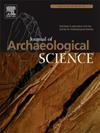An innovative construction technique in Roman theatres: The structural analysis of the cavea substructure in the theatres of Augusta Raurica (Augst) and Aventicum (Avenches)
IF 2.5
1区 地球科学
Q1 ANTHROPOLOGY
引用次数: 0
Abstract
Ancient Roman engineers used different methods when building the substructure of the seating area (cavea) of theatres and amphitheatres. In the northwestern provinces of the Empire, they often supported the seats by an artificial earth embankment which posed the structural problem of containing the soil infill. Because the curved perimeter wall of the cavea was not able to withstand the lateral earth pressure on its own, Roman engineers started experimenting with reinforcement systems which led to a variety of different cavea substructures. One of the most innovative and intriguing solutions to this problem can be seen in the theatre of Augusta Raurica (present-day Augst, Switzerland) where the retaining walls of the theatre were reinforced by series of semicircular buttresses. In the almost identical theatre of Aventicum (Avenches, Switzerland) the more traditional solution of a system of radial and annular walls were used for the same purpose. To get a better understanding of the structural behaviour of the theatre in Augst, the cavea substructure of both the theatres of Augst and Avenches were analysed with finite element method (FEM). Contrasting the structural properties and the amount of building material needed for each of the two theatres shed light on some of the reasons why the unconventional solution utilized in Augst did not become common. Although it used less building material, it was not as robust as the structural solution used in Avenches. Also, the support for the long, rectangular limestone blocks of the seating were not sufficient in Augst and the seats might have been subject to a considerable uneven sinking as the earth infill under them consolidated and shrank.
罗马剧院的一种创新的建筑技术:奥古斯塔·罗里卡(Augusta Raurica)和阿文提姆(Aventicum)剧院的腔室下部结构的结构分析
古罗马的工程师在建造剧院和圆形剧场的座位区(洞穴)的下层结构时使用了不同的方法。在帝国的西北省份,他们经常用人工土堤来支撑座位,这带来了容纳土填充物的结构问题。由于洞穴弯曲的外墙本身无法承受侧向土压力,罗马工程师开始试验加固系统,这导致了各种不同的洞穴子结构。对于这个问题,最具创新性和有趣的解决方案之一可以在奥古斯塔·劳里卡剧院(今天的瑞士奥古斯特)看到,剧院的挡土墙通过一系列半圆形扶壁加强。在几乎相同的Aventicum剧院(瑞士Avenches)中,采用了更为传统的径向和环形墙系统解决方案。为了更好地了解8月剧院的结构性能,采用有限元法对8月剧院和Avenches剧院的腔室下部结构进行了分析。对比两个剧院的结构特性和所需建筑材料的数量,揭示了八月份采用的非常规解决方案没有得到普遍应用的一些原因。虽然它使用较少的建筑材料,但它不像Avenches使用的结构解决方案那样坚固。此外,在8月份,长而矩形的石灰岩座椅块的支撑不够,座椅可能会受到相当不均匀的下沉,因为它们下面的填充物已经固结和收缩。
本文章由计算机程序翻译,如有差异,请以英文原文为准。
求助全文
约1分钟内获得全文
求助全文
来源期刊

Journal of Archaeological Science
地学-地球科学综合
CiteScore
6.10
自引率
7.10%
发文量
112
审稿时长
49 days
期刊介绍:
The Journal of Archaeological Science is aimed at archaeologists and scientists with particular interests in advancing the development and application of scientific techniques and methodologies to all areas of archaeology. This established monthly journal publishes focus articles, original research papers and major review articles, of wide archaeological significance. The journal provides an international forum for archaeologists and scientists from widely different scientific backgrounds who share a common interest in developing and applying scientific methods to inform major debates through improving the quality and reliability of scientific information derived from archaeological research.
 求助内容:
求助内容: 应助结果提醒方式:
应助结果提醒方式:


